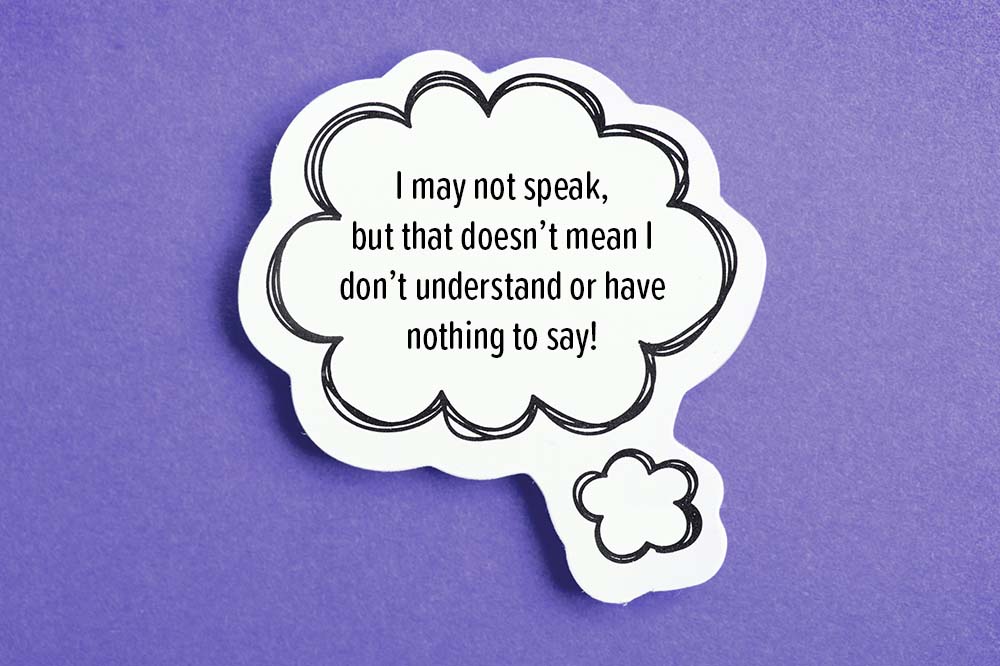Speech Issues in Autism: Introduction

All contents of this resource were created for informational purposes only and are not intended to be a substitute for professional advice, diagnosis, or treatment. Always seek the advice of your physician, therapist, or other qualified health providers with any questions or concerns you may have.
Speech issues are common in autism. In fact, about 40% of children with autism do not talk at all. Providing your child with an effective means to communicate their thoughts, opinions, experiences, feelings, and knowledge is essential to creating a meaningful life for them.
We’ve learned from children who later were able to gain speech, or find a way to communicate, that they understand much more than people think they do. Indeed, many understand everything.
For this reason, it’s important to know that your child is listening to you. Above all, they have thoughts and feelings that need to be acknowledged. Presume competence.
Types of Speech Issues
In order to effectively navigate speech issues in autism it’s important to understand the difference between apraxia and a developmental speech delay.
Apraxia
Apraxia is a motor speech disorder. That is to say, a type of neurological disorder that makes it difficult or impossible for a person to speak.
- People with apraxia understand language and know what they want to say.
- The brain has difficulties with directing and coordinating the muscle movements involved with making sounds to formulate words
- This isn’t an issue of muscle weakness – it’s a neurological issue that affects the muscle’s ability to perform
- Find out more information about apraxia, including what makes speech therapy different for children with apraxia at Apraxia Kids.
Developmental Speech Delay
Whereas, a developmental speech delay is when a child is following a “typical” path of speech development, but at a rate that is considered slower than normal. Developmental speech delays are classified into two categories:
- Receptive Language Delay: when a person struggles to understand and process information they are receiving.
- Expressive Language Delay: when someone struggles to convey or express information to other people.
Please note, a person with autism can have a receptive language delay, expressive language delay, or both.
Approaches to Speech Issues in Autism
Now that you understand the difference between apraxia and a developmental speech delay, you can use this knowledge to determine the best way to help your child communicate.
There are two different approaches to developing speech:
- Therapeutic Approach: Includes speech and behavioral therapies as well as Augmentative and Alternative Communication (AAC) options
- Medical Approach: Involves treating underlying medical issues that impede speech
It is essential that parents utilize both approaches in order to achieve the best possible outcome for their child. Why? Because both apraxia and developmental speech delays can be caused by underlying medical issues – medical issues that cannot be remedied with therapy alone. As one mom said, “No amount of time spent in speech therapy can prevent my kid from having the seizures which hindered his ability to speak.”
Click below to learn more about each approach:
- Therapeutic and Communication Options for Speech Issues in Autism
- Medical Causes of Speech Issues in Autism
Additional Resources





